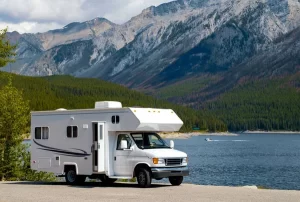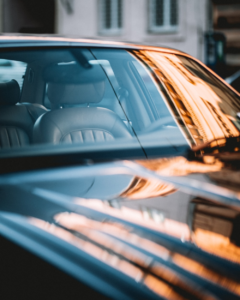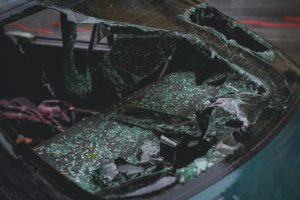Did you know a special type of glass known as auto glass is used to manufacture vehicles? Auto glass is used everywhere, from your car’s windshield to side mirrors. It’s even used to create sunroofs and moonroofs in certain car models! But what makes auto glass different from normal glass?
While auto glass and normal glass appear identical, they’re vastly different in terms of their properties and how they’re made. They’re also used for different purposes and repaired and replaced differently. People rely on auto glass specialists instead of glaziers to get a windshield replacement!
If you’re curious to discover how auto glass differs from normal glass, read on! Here’s a comprehensive look at both and what makes them so different.
Auto Glass Is Manufactured Differently from Normal Glass
One of the biggest differences between auto glass and normal glass is the way it’s manufactured. There are two main types of auto glass—tempered glass and laminated glass. Throughout this article, we’ll be referring to the two types of auto glass separately. Each type has its unique manufacturing process.
How is Tempered Glass Manufactured?
Did you know tempered glass is made by softening regular glass by heating it in a special oven at around 1150 Fahrenheit (620 Celsius)? The glass is then cooled uniformly by blasting it with high-pressure air in a process known as quenching. If the glass is quenched properly, the center of the glass cools slower than the outer surface. This keeps the molecules at the center of the glass under tension while the outer surface undergoes compression—causing the glass to harden!
The key to creating tempered glass is to avoid heating the glass beyond 1150 Fahrenheit so that it doesn’t warp. It’s also important to cool it uniformly to prevent breaking during the tempering process.
How is Laminated Glass Manufactured?
Have you ever laminated a sheet of paper? Laminated glass undergoes a similar process! It’s made by bonding thin layers of a plastic resin known as polyvinyl butyral (PVB) between sheets of ordinary glass using heat.
Heat and pressure are applied to layers of glass and PVB in a special vessel known as an autoclave during the lamination process. This causes the PVB to melt and stick the layers of glass together. Laminated glass typically features at least two layers each of glass and PVB.
How is Normal Glass Manufactured?
It’s easy to assume every type of glass other than tempered and laminated glass is the same—but nothing could be further from the truth! While there are several types of normal glass, the most common type is soda-lime glass.
Soda-lime glass is made by melting silica, sodium oxide, and calcium oxide together at around 3050 Fahrenheit (1675 Celsius) in a special furnace. This causes everything to combine and create a glass that has a green or brown tinge depending on how much iron oxide is present in the furnace.
Soda-lime glass differs from tempered glass as it’s made at a higher temperature. It’s also different from laminated glass because it doesn’t contain any plastic resin.
Auto Glass Has Different Properties Compared to Normal Glass
Auto glass and normal glass have completely different properties because of the unique ways in which they’re made. As we mentioned before, auto glass refers to either tempered or laminated glass. Let’s look at the properties of each and how they’re different from normal glass.
The Properties of Tempered Glass
The compressive stress on the surface of a sheet of glass refers to how closely the molecules inside it are bound together. Tempered glass has a far higher compressive stress value than normal glass. Therefore, it’s capable of withstanding higher pressure and temperatures than normal glass. Unfortunately, the strength of tempered glass also makes it extremely difficult to cut and reshape compared to normal glass.
Another massive difference between tempered glass and regular glass is how it breaks. Tempered glass breaks into tiny cube-shaped fragments with blunt edges. In comparison, regular glass typically shatters into shards with sharp edges. In other words, tempered glass is unlikely to injure someone if it breaks compared to regular glass. This is one of the main reasons why it’s used in vehicles.
The Properties of Laminated Glass
It’s tempting to think laminated glass is heavy because it has several layers—but this isn’t always true! While laminated glass is thicker than normal glass due to its layered structure, each layer is quite thin. Therefore, the final weight of a pane of laminated glass is less than a pane of normal glass with the same dimensions.
If you ever see laminated glass shatter, you’ll notice it remains in one piece. This occurs because laminated glass is bonded together with layers of PVB, as discussed previously. These layers make laminated glass far stronger than tempered and normal glass.
The PVB within laminated glass filters almost all UV light shining through it, whereas normal glass filters zero UV light. Moreover, the layered structure of laminated glass makes it far more soundproof than regular glass.
The Properties of Normal Glass
Normal soda-lime glass is far cheaper to manufacture and install than tempered and laminated auto glass. However, it’s far weaker and less resistant to high temperatures. It also shatters into a ton of pieces instead of laminated glass, which stays in one shape. Unfortunately, these properties make it a dangerous choice for use as auto glass in vehicles.
Auto Glass is Used Differently Compared to Regular Glass
It’s extremely unlikely for a car manufacturer to use regular glass in their vehicles because of its properties. But if you think tempered and laminated glass can be used interchangeably in a vehicle, think again! Here’s a look at why tempered glass and laminated glass are used in different areas of a car.
Tempered Glass is Used in Car Windows and Rear Windshields
Tempered glass is normally used in the windows and rear windshields of cars. In other words, if you ever call auto glass technicians for a car window replacement or a rear windshield repair, they’ll likely bring tempered glass parts!
There are two key reasons why tempered glass is used in a car’s windows and rear windshield. Firstly, it’s far stronger than normal glass. This makes it ideal for installing in the back and sides of a car since these areas are prone to be impacted significantly should your car be hit from the side or enter a barrel roll during an accident.
Tempered glass is also perfect for use in car windows and rear windshields because of its safe breaking pattern, as discussed previously. This lowers the risk of passengers getting cut or stabbed during a crash. If the normal glass were used in these areas instead of tempered glass, even a minor accident would shower the passengers with sharp glass fragments and put their lives in danger!
Laminated Glass is Used in Front Windshields
Laminated glass is used in front windshields for two key reasons. Firstly, it stays in one piece upon impact. This protects the driver from being hurt by objects like rocks or the broken parts of other cars flying through the front windshield during a head-on collision.
Secondly, laminated glass is one of the strongest types of glass available. This makes it ideal for front windshields because the potential impact to the front of a vehicle in a crash is far higher than its sides or back.
Normal Glass Isn’t Used in Vehicles
Normal soda-lime glass is extremely weak and breaks into sharp pieces. Therefore, soda-lime glass is extremely unlikely to be used as auto glass in vehicles. Instead, soda-lime glass is often used for commercial and residential purposes. For instance, it’s commonly used to manufacture glass bottles and windows in people’s homes.
Auto Glass is Repaired and Replaced Differently from Regular Glass
The tempered and laminated auto glass both have special properties that require auto glass specialists to repair and replace them in different ways.
Repairing and Replacing Tempered Glass
Tempered glass is extremely difficult to cut and shape after the tempering process. Therefore, it must be shaped into car windows and rear windshields using special tools at auto glass repair shops before it’s tempered. It’s also common for auto glass technicians to use a special epoxy resin to fix cracks in tempered glass. The epoxy is applied to the cracked glass using a putty knife and left to cure. The excess epoxy is then removed with a razor, and the glass is buffed with a special glass cleaner.
If the tempered glass in your car window or rear windshield shatters, it’s vital to hire an expert auto glass company to replace it safely. They’ll send technicians who have the right equipment to safely remove all the pieces of tempered glass from your car and the road. They’ll also have special tools like suction cups to safely pick up a new car window or rear windshield pane before installing it on your car.
Repairing and Replacing Laminated Glass
Compared to tempered glass, it’s quite difficult to repair cracks in laminated glass because of how it breaks. If there’s a minor chip or crack in the front windshield, auto glass technicians use epoxy to repair it in the same way as tempered glass. However, if there’s a bullseye crack in the front windshield that’s shaped like a radial fracture, then it’s likely that the windshield technicians will suggest a full car windshield replacement.
While laminated glass doesn’t shatter into a million pieces, it still requires experts to remove it. It’s common for laminated auto glass windshields to jam on impact into the front windshield frame. Therefore, tools like crowbars and glass picks are required to pry it off safely. If you need to repair or replace the laminated glass in your front windshield, hiring a professional auto glass company is vital. They’ll dispatch technicians to your location who possess the knowledge and tools required to repair and replace the laminated glass optimally.
Summary
It’s normal for a car’s windshields and windows to be bombarded by natural elements like sand and snow while you drive. Therefore, it’s extremely unwise to use normal glass in vehicles as it’ll crack or shatter easily. It’s also dangerous to use normal glass in cars because of its break pattern. The last thing you want is for millions of sharp fragments to come flying at your eyes and face in the event of an accident!
Auto glass is a better option because it’s more durable. It’s also less likely to injure you if you crash because of its relatively safer break patterns. Tempered glass is used to manufacture car windows and rear windshields because it’s strong and breaks into small, blunt pieces that are less likely to harm a vehicle’s passengers during a crash. On the other hand, laminated glass is used to manufacture front windshields because it stays in one piece when it shatters. It’s also stronger than normal and tempered glass—making it optimal for front windshields as it protects the driver during a head-on collision.

Looking for a reliable mobile auto glass repair service in San Diego? Why not get in touch with A Auto Glass! We’re a 24/7 auto glass repair and replacement company that has operated in San Diego for over 15 years. We provide one of the most affordable windshield replacement services in the city, and our auto glass technicians always aim to perform same-day repairs. We also offer top-shelf side view mirror replacement and sunroof replacement services.
Get in touch with us today by dialing 619-415-7830 or emailing [email protected]. You can also fill out our online form, and we’ll reach out to you!





